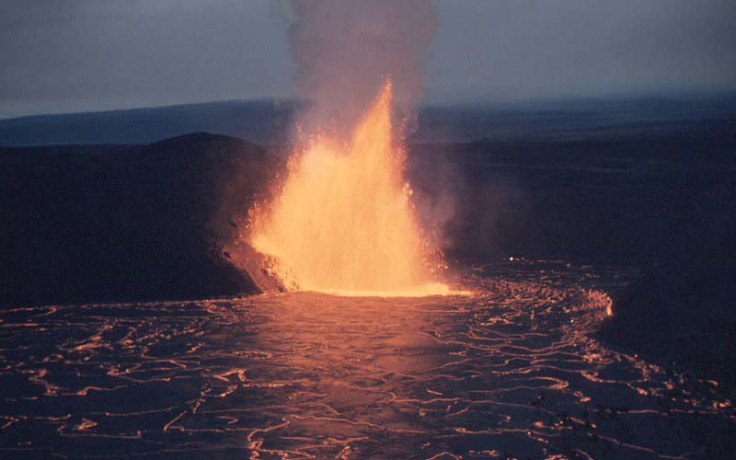Traces of rock almost as old as the Solar System came out of a volcano just 20 million years ago
Where had it been hiding for almost 4.5 billion years?
The signatures of primordial rock from the early days of the Solar System have been discovered – in very young volcanic basalt at several sites across the globe.
The characteristic isotope signatures of tungsten and helium in the rock samples from Hawaii, Samoa and Iceland were about 4.5 billion years old, but the rock they were found in was just 20 million years old. The samples were dated by the ratio of radioactive tungsten-182 and stable tungsten-184. This, combined with the ratio of helium isotopes in the sample, dated their origin to within just 60m years of the origin of the Solar System.
The discovery, outlined in a paper published in the journal Science, raises the puzzle of how this ancient isotope signature found its way into such young rock.
The answer appears to be that parts of the Earth's ancient mantle – the thick, mostly solid layer beneath the crust – survived for 4.5bn years in one place. Then, 20m years ago – relatively very recently – these parts of the mantle became mobilised, melting with other rock and erupting to the surface to form volcanic basalt.
This contradicts established theory of how quickly the mantle is recycled.
"The Earth's mantle is convicting, it's mixing. We have plates that are moving, crust that gets subducted and recycled. With all this recycling, we would expect or we should see a very homogeneous mantle," study author Andrea Mundl of the University of Maryland told IBTimes UK.
"So it is exciting to see sources in the deep Earth that were not affected by this. They were not affected by mantle mixing over 4.5bn years."

The rocks containing the remnants of this ancient were found in distant locations in the Pacific, the North Atlantic and the Indian Ocean. But not all young volcanic rock contains these ancient signatures. Samples from the Canary Islands didn't show any unusual tungsten or helium signatures, Mundl said.
This suggests that small parts of the ancient mantle exist in several distinct locations within the Earth. They could be linked to seismic anomalies called 'ultra-low velocity zones', said Mundle. These are regions tens of hundreds of kilometres wide at the boundary of the mantle and the Earth's core where convection is unusually slow.
The finding comes shortly after parts of the Earth's original crust were found in much younger rock. That finding suggested that plate tectonics are not as good at recycling the crust as we thought. This finding suggests that anomalies called 'ultra-low velocity zones' are present under the sites where the samples were taken.
© Copyright IBTimes 2025. All rights reserved.






















